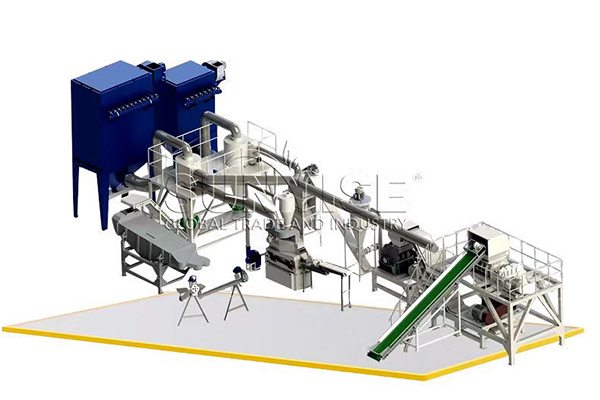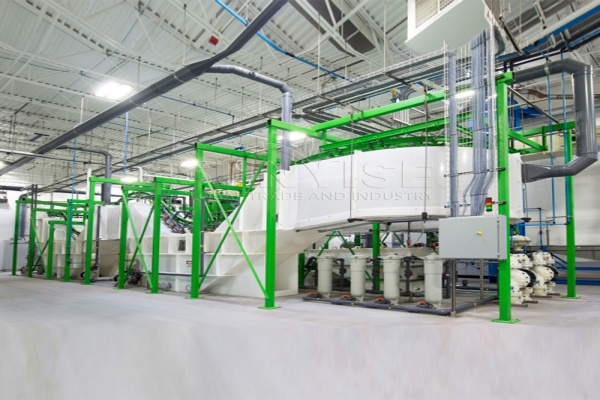పారిశ్రామికీకరణ మన జీవితాలను సాపేక్షంగా సులభతరం చేసిన అనేక ఎలక్ట్రికల్ మరియు ఎలక్ట్రానిక్ పరికరాల ఆవిష్కరణకు దారితీసింది. ఇది ఎలక్ట్రానిక్ వ్యర్థాల తరం పెరుగుదలకు దారితీసింది (ఇ-వేస్ట్). ఇన్ 2019, ఇ-వ్యర్థాల ప్రపంచ తరం గురించి 53.6 మిలియన్ టన్నులు, మరియు అది చేరుకుంటుందని భావిస్తున్నారు 74 మిలియన్ టన్నులు 2030. ఇన్ 2019, ఆసియా, అమెరికా, మరియు ఐరోపా ఉత్పత్తి చేయబడింది 50 మిలియన్ టన్నుల ఇ-వ్యర్థం, ఆఫ్రికా మరియు ఓషియానియా ఉత్పత్తి అయితే 2.9 మిలియన్ టన్నులు మరియు 0.7 మిలియన్ టన్నులు, వరుసగా. కాబట్టి, ఇ-వ్యర్థంగా పరిగణించబడుతుంది? మీకు ఆసక్తి ఉంటే, దయచేసి చదవడం కొనసాగించండి.
మొదట, ఈ వీడియోను తనిఖీ చేయండి. అప్పుడు మీరు ఇ-వేస్ట్ యొక్క ప్రస్తుత పరిస్థితులపై ప్రాథమిక అవగాహన పొందవచ్చు ……
ఇ-వ్యర్థాల నిర్వచనం

ఎలక్ట్రానిక్ వ్యర్థాలు, సాధారణంగా ఇ-వేస్ట్ అని పిలుస్తారు, ఇటీవలి సంవత్సరాలలో దాని సుదూర సామాజిక కోసం ఎక్కువ శ్రద్ధ వచ్చింది, environmental and economic impacts. With the rapid development of electronic devices and consumers constantly upgrading their electronic products, the amount of e-waste generated has surged.
E-waste announced by the European Commission includes discarded electronic and electrical equipment. This type of waste includes a variety of technological products that have exceeded their service life or are inefficient. Electronic devices contain harmful elements and, unlike ordinary garbage generated in cities, they pose a major threat to ecosystems and human health.
Many countries, especially developing countries, lack the infrastructure to properly handle and recycle e-waste, leading to environmental and health risks caused by improper e-waste disposal. Currently, many people use dangerous methods such as open burning, landfilling, open dumping, informal dismantling and manual recycling. These practices pose a significant risk to public health. In order to avoid the high cost of proper disposal, many developed countries choose to export e-waste to developing countries such as India and Africa. These countries are currently struggling with the problem of insufficient infrastructure for e-waste management.
What are the recyclable e-wastes?
Lithium batteries
Because lithium batteries contain a lot of reusable materials:
Lithium: Lithium is a key component of lithium batteries, and recycled lithium can be used to make new lithium batteries. ఉదాహరణకు, in electric vehicles and portable electronic devices, the recycling and reuse of lithium is essential to reduce raw material costs and ensure the supply of lithium resources.
Cobalt: చాలా లిథియం బ్యాటరీలలో సానుకూల ఎలక్ట్రోడ్ పదార్థాలలో కోబాల్ట్ ఉంటుంది, లిథియం కోబాల్ట్ ఆక్సైడ్ వంటివి (Licoo₂). కోబాల్ట్ అరుదైన మరియు ఖరీదైన లోహం, మరియు రీసైకిల్ కోబాల్ట్ను బ్యాటరీ తయారీ పరిశ్రమలో తిరిగి ఉపయోగించుకోవచ్చు, కొత్తగా తవ్విన కోబాల్ట్ వనరులపై ఆధారపడటాన్ని తగ్గించడం.
నికెల్: కొన్ని లిథియం బ్యాటరీలు (నికెల్-కోబాల్ట్-మాంగనీస్ ఆక్సైడ్ వంటివి (NCM) బ్యాటరీలు) నికెల్ కలిగి ఉంటుంది. నికెల్ యొక్క రీసైక్లింగ్ వనరులను రీసైకిల్ చేయడానికి సహాయపడుతుంది, మరియు కొత్త బ్యాటరీల ఉత్పత్తిలో, రీసైకిల్ నికెల్ కొన్ని ముడి పదార్థాల అవసరాలను తీర్చగలదు.
రాగి మరియు అల్యూమినియం: రాగి మరియు అల్యూమినియం సాధారణంగా లిథియం బ్యాటరీల కేసింగ్ మరియు ఎలక్ట్రోడ్ కనెక్షన్ భాగాలలో ఉపయోగిస్తారు. ఈ లోహాలను రీసైక్లింగ్ ప్రక్రియల ద్వారా శుద్ధి చేయవచ్చు మరియు తరువాత ఎలక్ట్రానిక్ పరికరాల తయారీ లేదా ఇతర పారిశ్రామిక ఉపయోగాలలో తిరిగి ఉపయోగించవచ్చు.
రీసైక్లింగ్ పద్ధతులు:
Lithium batteries recycling production line Includes steps such as disassembly, crushing and screening. మొదట, disassemble the waste lithium battery, separate the shell, electrode and other parts, then crush the electrode material, and separate copper, aluminum and other metals by screening and magnetic separation.
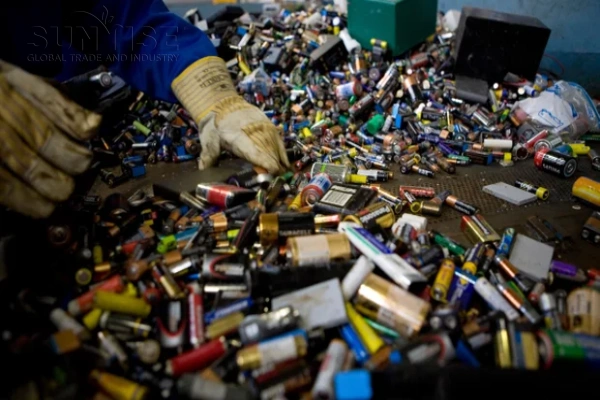

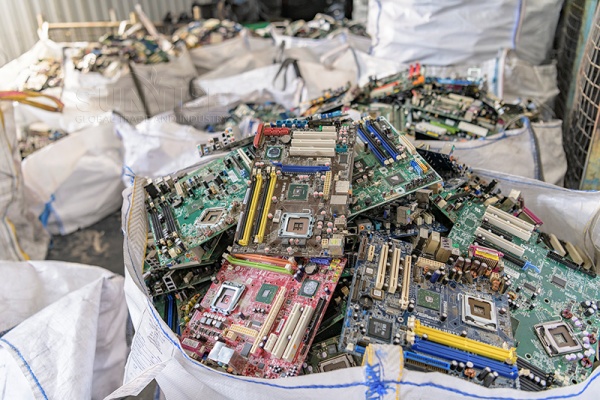
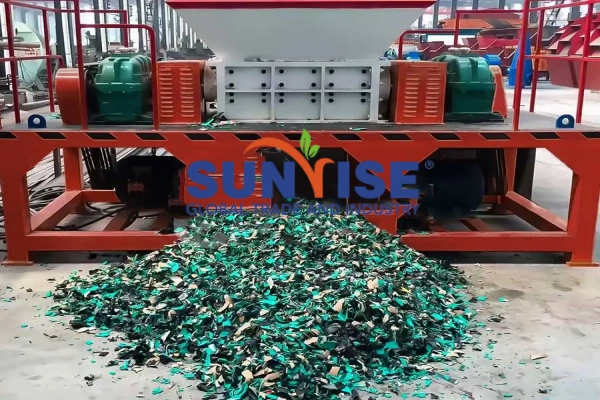
Circuit board
Recycled materials:
Precious metals: Circuit boards contain precious metals such as gold, వెండి, and platinum. Gold is mainly used for pins, contacts and connection parts of some high-precision electronic components on circuit boards because it has good conductivity and corrosion resistance. Silver is often used in circuit boards and some components such as capacitors. These precious metals have high recycling value and can be reused in industries such as electronic component manufacturing or jewelry.
Non-ferrous metals: Copper is the most important non-ferrous metal in circuit boards and is used to make circuits and connecting wires of various electronic components. Recycled copper can be used to make new wires, cables and electronic components. అదనంగా, circuit boards also contain a small amount of tin, which is mainly used for welding electronic components. The recycled tin can be used again in the production of welding materials.
Rare metals: Such as tantalum, which is used in some high-performance capacitors on circuit boards. టాంటాలమ్ యొక్క రీసైక్లింగ్ ఎలక్ట్రానిక్స్ పరిశ్రమలో అరుదైన లోహాల డిమాండ్లో కొంత భాగాన్ని తీర్చడంలో సహాయపడుతుంది ఎందుకంటే టాంటాలమ్ వనరులు సాపేక్షంగా చాలా తక్కువ.
సర్క్యూట్ బోర్డ్ రీసైక్లింగ్ పద్ధతి:
మొదట, పెద్ద భాగాలను తొలగించడానికి సర్క్యూట్ బోర్డ్ను విడదీయండి, ఆపై సర్క్యూట్ బోర్డ్ను చిన్న కణాలుగా విభజించండి. అప్పుడు గురుత్వాకర్షణ సార్టింగ్ వంటి భౌతిక సార్టింగ్ పద్ధతులను ఉపయోగించండి, అయస్కాంత విభజన మరియు ఎలెక్ట్రోస్టాటిక్ సార్టింగ్ వేర్వేరు లోహాలు మరియు లోహేతర పదార్థాలను వేరు చేయడానికి.
సౌర ఫలకాల ప్యానెల్లు
పునర్వినియోగపరచదగిన పదార్థాలు:
సిలికాన్: ఫోటోవోల్టాయిక్ ప్యానెళ్ల యొక్క ప్రధాన పదార్థం సిలికాన్, ముఖ్యంగా స్ఫటికాకార సిలికాన్ ఫోటోవోల్టాయిక్ ప్యానెల్స్లో. రీసైకిల్ సిలికాన్ శుద్దీకరణ మరియు ఇతర ప్రక్రియల తర్వాత కాంతివిపీడన ప్యానెల్ తయారీలో తిరిగి ఉపయోగించవచ్చు, లేదా ఇతర సెమీకండక్టర్ సంబంధిత పరిశ్రమలలో ఉపయోగిస్తారు.
వెండి: కాంతివిపీడన ప్యానెళ్ల యొక్క ఎలక్ట్రోడ్ భాగం సాధారణంగా వెండిని కలిగి ఉంటుంది, ఇది కరెంట్ను సేకరించడానికి మరియు నిర్వహించడానికి ఉపయోగిస్తారు. రీసైకిల్ వెండిని కొత్త ఫోటోవోల్టాయిక్ ప్యానెల్ ఎలక్ట్రోడ్లు లేదా ఇతర ఎలక్ట్రానిక్ పరికరాల వాహక భాగాలను తయారు చేయవచ్చు.
అల్యూమినియం: కాంతివిపీడన ప్యానెళ్ల ఫ్రేమ్ సాధారణంగా అల్యూమినియంతో తయారు చేయబడింది, మరియు రీసైకిల్ అల్యూమినియం కొత్త కాంతివిపీడన ప్యానెల్ ఫ్రేమ్లు లేదా ఇతర అల్యూమినియం ఉత్పత్తులను తయారు చేయడానికి ఉపయోగించవచ్చు.
గ్లాస్: ఫోటోవోల్టాయిక్ ప్యానెళ్ల ప్యానెల్ ప్రధానంగా గాజుతో తయారు చేయబడింది. శుభ్రపరిచే మరియు ప్రాసెసింగ్ తర్వాత ఆర్కిటెక్చరల్ గ్లాస్ మరియు ఆటోమోటివ్ గ్లాస్ వంటి పరిశ్రమలలో రీసైకిల్ గాజును ఉపయోగించవచ్చు.
ఎలా వ్యర్థ సౌర ప్యానెల్:
మొదట, ఫోటోవోల్టాయిక్ ప్యానెల్ మరియు గాజు వంటి ప్రత్యేక భాగాలను విడదీయడానికి ఫ్రేమ్ రిమూవర్ను ఉపయోగించండి, అల్యూమినియం ఫ్రేమ్ మరియు బ్యాటరీ కణాలు. గాజు తొలగించబడిన తరువాత, ఫోటోవోల్టాయిక్ ప్యానెల్ ఒక క్రషర్తో చూర్ణం చేయబడింది. బ్యాటరీ కణాల నుండి వేరు చేయబడిన సిలికాన్ పొరలు మొదట చూర్ణం చేయబడతాయి మరియు భూమిని చిన్న కణాలు లేదా పొడులుగా మార్చారు, ఆపై సిలికాన్ ను ఫిల్టర్ చేయడానికి స్క్రీనింగ్ పరికరాలను ఉపయోగించి ప్రదర్శించారు, రాగి, మరియు ఇవా జిగురు.
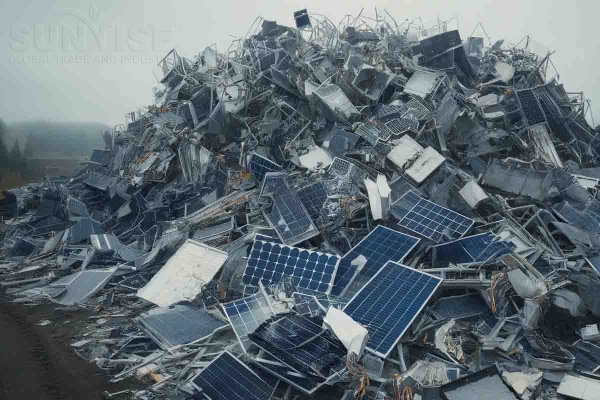

ఎలక్ట్రానిక్ వేస్ట్ రీసైక్లింగ్ కోసం విధానాలు
Let’s take some countries as examples!
| దేశం | విధానం | ఫలితం | |
| 1. | యునైటెడ్ స్టేట్స్ | రాష్ట్ర స్థాయి ఇ-వ్యర్థ చట్టాలు | కనిష్టీకరించిన అస్థిరమైన రీసైక్లింగ్ మరియు అక్రమ డంపింగ్ వైపు విధానం |
| 2. | జర్మనీ | విస్తరించిన నిర్మాత బాధ్యత (Epr) | రీసైక్లింగ్ యొక్క అధిక రేట్లు, తగ్గిన అక్రమ డంపింగ్ తో |
| 3. | స్వీడన్ | ఫీజులతో నిర్మాత బాధ్యత | సమర్థవంతమైన సేకరణ మరియు రీసైక్లింగ్ వ్యవస్థ |
| 4. | చైనా | నేషనల్ ఇ-వేస్ట్ రీసైక్లింగ్ కార్యక్రమం | రీసైక్లింగ్ రంగాన్ని లాంఛనప్రాయంగా చేసే ప్రయత్నాలు, మరియు పర్యావరణ కాలుష్యం తగ్గించడం |
| 5. | భారతదేశం | ఇ-వేస్ట్ మేనేజ్మెంట్ నియమాలు 2016 | సమ్మతి అమలు మరియు అభివృద్ధి వైపు |
సారాంశం
The mountains of discarded electronics are not only an eyesore, but also a potential concern for our health and our planet. At the same time, electronic waste recycling has great potential because it is able to extract valuable metals, which are present in higher concentrations in electronic waste than in their natural sources. అదనంగా, the technology of different electronic waste recycling methods optimizes the efficiency and cost-effectiveness of these methods. These methods involve electronic products such as circuit boards, photovoltaic panels, lithium batteries, మొదలైనవి.
There is still a lot of work need to do to develop sustainable and efficient electronic waste management solutions. As a professional e-waste recycling machine manufacturer, SUNRISE is also working hard to cope with the growing problem of e-waste management. SUNRISE’s e-waste recycling production lines are helping lots of clients to save resources and generate economic benefits. At the same time, we will adjust the proposal according to the situation of the customer’s country to ensure that every customer can get the most efficient electronic waste recycling production line.
కాబట్టి, దయచేసి వెనుకాడరు మమ్మల్ని సంప్రదించండి, we’ll give you advice from a professional perspective.
మమ్మల్ని సంప్రదించండి
